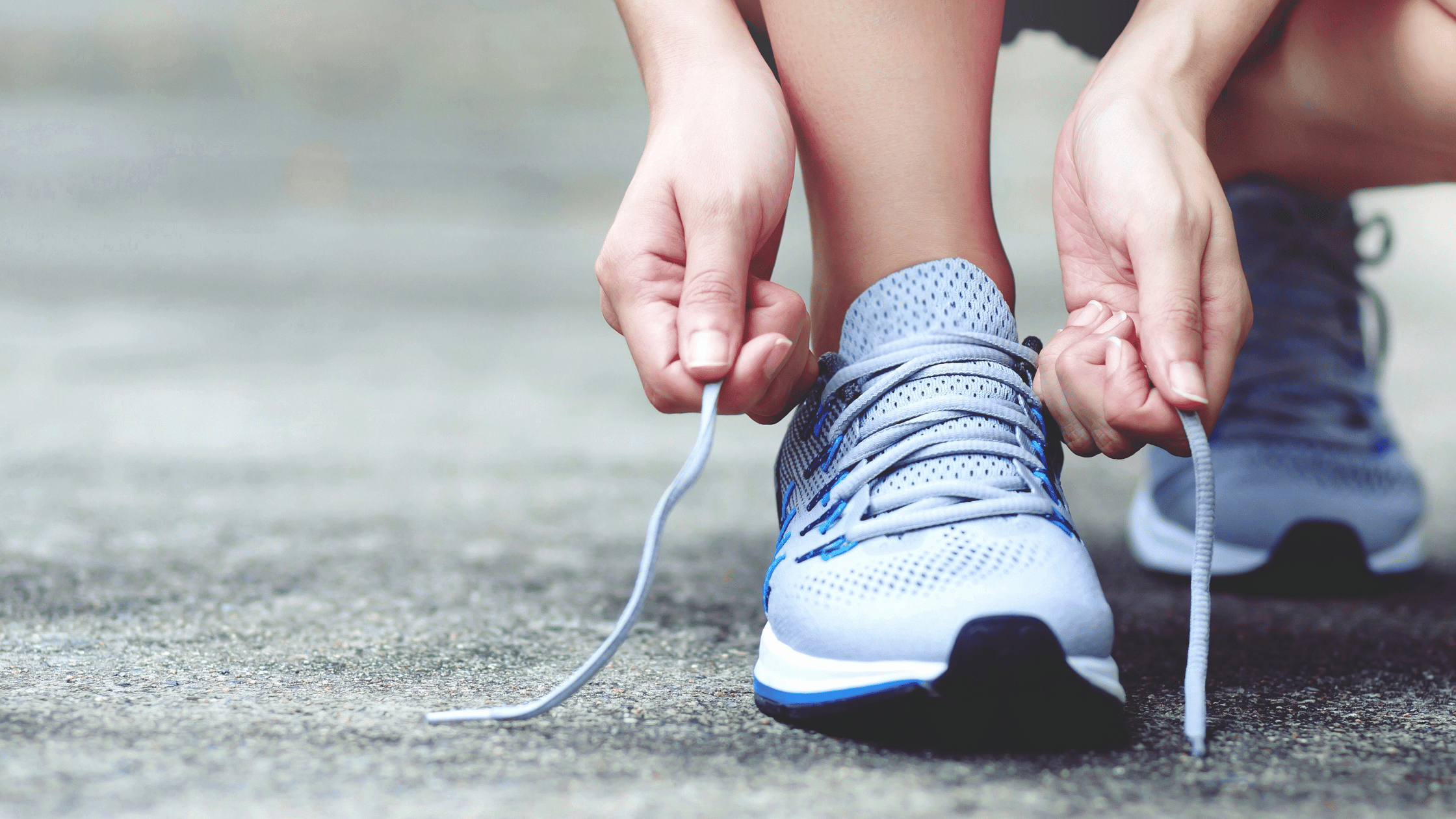Tips for Running a 5K: Preparation, Recovery, and Physical Therapy

Licensed Physical Therapist, PT, DPT // EW Motion Therapy Trussville
Running a 5K can be an exhilarating challenge, whether you're a seasoned runner or a beginner. The journey from the initial decision to participate in a race through the preparation phase to the recovery period involves both physical and mental readiness. A physical therapist can be an invaluable guide in preparing and training for a race, offering personalized advice and techniques to enhance your performance and prevent injuries. At EW Motion Therapy, we are dedicated to helping runners like you reach their goals while staying injury-free. Even if you don’t choose our services, this guide is here to offer practical tips for each stage of your 5K journey, highlighting how physical therapy can be a game-changer in enhancing your running performance and recovery.
Preparing physically for your 5K
The first step in your physical preparation for a 5K is to establish a solid running base. But remember, it's not just about pushing yourself, it's about taking care of yourself too. Start by incorporating 20 to 30 minutes of running, three times a week, focusing on a pace that feels comfortable. Gradually increase your mileage by 10% each week. This slow build not only helps prevent injuries but also builds endurance steadily. Always listen to your body and stop running if you feel increasing pain. Your body is your best guide, and it's important to respect its limits. As you increase your mileage, be sure to stay hydrated and get plenty of sleep. Your body will thank you for it.
Cross-training is vital for balancing your muscle groups and avoiding overuse injuries. Activities like cycling, swimming, or even yoga can improve your aerobic capacity while giving your running muscles a break. Using other muscles in different ways and keeping different movements in your routine is a great way to combat boredom and promote joint & muscle integrity.
Mental preparation strategies
Setting achievable goals
When preparing for a 5K, setting realistic and personal goals is crucial. These could range from simply finishing the race to achieving a personal best. Goals should be specific, measurable, achievable, relevant, and time-bound (SMART). Reflect on what you want to accomplish and let that guide your training, which you can adjust based on how your body feels. For example, if you are a beginner, you could set a goal to finish the race in under 45 minutes, or however long you think it might take you based on your current mile time. If you overtrain too hard before the race, you increase your injury risk, so be sure to listen to your body the entire time.
Mental conditioning
Mental toughness plays a significant role in any athletic endeavor. Techniques such as visualization and positive self-talk can be very effective. Spend time visualizing the race day—from the start to the finish line—and imagine yourself running strong and completing your goal. Positive affirmations can reinforce your confidence and reduce pre-race anxiety. Handling stress is a big predictor of how healthy you stay during your training, so regularly check in with yourself to ensure you are not too stressed to handle the demands you’re placing on yourself. If this is your first 5K and you’re nervous, try having a friend join you for the race - it can really help to have someone supporting you and cheering you on.
It’s also vital for any runner to remember their “why” - their reason for running the race in the first place. Maybe you’re doing it for your own health and wellness, or maybe you’re doing it for a charity or for a team. Whatever your reason, it can always be a motivating factor to condition yourself for the race, especially if you’re racing for something bigger than yourself.
The race day: tips for success
Pacing and hydration
Start the race at a pace you can maintain. It's common for the excitement and adrenaline to lead to starting too quickly, which can cause you to burn out early. Plan your pace per mile based on your training runs. Hydration is equally important; drink water regularly in the days leading up to the race and use the water stations during the race to maintain hydration without overdoing it.
Effective warm-up strategies
Warming up before a 5K race is essential to prime your body for the effort ahead and minimize the risk of injury. A proper warm-up increases your heart rate, enhances blood flow to your muscles, and prepares your joints for movement. Here are some specific warm-up exercises that you can include on race day:
Dynamic stretching
Dynamic stretches involve movement and are particularly effective for preparing your muscles for the specific motions of running. Unlike static stretching, which can lead to muscle relaxation and decrease performance when done before vigorous activity, dynamic stretching helps to increase muscle temperature and functional flexibility. Here are a few dynamic stretches to consider:
Leg swings: Stand on one leg and swing the other leg forward and backward. This exercise warms up the hip flexors and hamstrings. Perform 10 swings on each leg.



Butt kicks: Jog in place while kicking your heels up towards your buttocks for 30 seconds. This warms up your hamstrings and gets you ready for the forward motion of running.

Light cardio
A brief session of light cardio can help raise your overall body temperature and enhance muscle elasticity. This could include:
- Jogging: A gentle jog for 5 to 10 minutes helps transition your body from rest to activity, reducing the shock of a sudden start.
- Jumping jacks: A minute or two of jumping jacks increases your heart rate and engages multiple muscle groups.
Combining warm-up elements
Your complete warm-up should take around 15 to 20 minutes. Begin with dynamic stretching to loosen the muscles, followed by light cardio to raise your heart rate. This combination ensures that your body is optimally prepared for both the physical and mental challenges of a 5K and can significantly improve your performance and enjoyment of the race.
Recovering after the race
After crossing the finish line, keep walking for a few minutes to cool down and promote circulation. Gently stretch major muscle groups, and hydrate with water or an electrolyte drink to replenish fluids and minerals lost through sweat.
Recovery doesn’t end on the day of the race. Incorporating rest days, continuing to engage in gentle cross-training, and getting plenty of sleep are key to recovery. Returning to physical therapy post-race can aid in recovering from any race-related stress and injuries. Therapists can provide targeted massages, stretches, and exercises to address post-race tightness and imbalances, ensuring a quicker and safer return to running.
How physical therapy can help runners
Physical therapy plays a crucial role in both preventing injuries and enhancing overall performance for runners. Regular sessions with a physical therapist are not only beneficial post-injury but also serve as preventive care to keep your running mechanics efficient and your body injury-free. Here, we explore what a typical physical therapy treatment plan might look like for a runner, emphasizing maintenance, injury prevention, and performance enhancement.
Assessment and personalized treatment plans
The first step in any physical therapy treatment plan is a comprehensive evaluation. A physical therapist will assess your running form, flexibility, strength, and joint alignment. This might include a gait analysis to analyze mechanics, checking for muscle imbalances or tightness, and identifying weak muscle groups that may need strengthening to support efficient running. Based on the findings, the physical therapist will develop a personalized treatment plan to address your specific needs and goals.
Core components of a runner’s treatment plan
Strengthening exercises
Runners benefit greatly from strengthening the core, hip, and leg muscles, which support and stabilize the pelvis during running. A physical therapist may include exercises such as planks and bridging, hip abductors and rotators like clamshells or side-lying leg raises, or squats and lunges. These exercises help reduce the risk of common running injuries, such as IT band syndrome or runner's knee, by ensuring proper alignment and balance throughout the body.
Flexibility and mobility work
Increasing flexibility and improving joint mobility are also crucial for runners to maintain a healthy range of motion and prevent injuries. Physical therapy might involve developing dynamic stretching routines to be performed during warm-ups, as well as static stretching and foam rolling post-run to aid in recovery and decrease muscle soreness. Your therapist might also incorporate joint mobilization techniques that can increase joint mobility and relieve tight muscles.
Injury-specific interventions
If a runner comes in with a specific injury, the physical therapy approach will adjust to focus on healing and rehabilitation. For example tendonitis treatments might include eccentric strengthening exercises to load the tendon gradually and promote healing. Stress fractures are also common among runners - recovery could require a period of rest followed by graded bone loading exercises to allow the bone to heal while maintaining overall fitness.
Monitoring progress and adjustments
Throughout the treatment plan, the physical therapist will monitor the runner's progress, making adjustments as needed. This could involve progressing exercises, introducing new activities, or modifying current treatments based on the runner's feedback and recovery status.
Physical therapy offers a comprehensive approach to ensure runners can perform at their best, stay injury-free, and recover effectively when injuries do occur. By following a personalized treatment plan designed by a physical therapist, runners can achieve optimal performance and longevity in their sport.
Embarking on a 5K run requires dedication and careful planning. By focusing on both physical and mental preparation, setting realistic goals, and understanding the critical role of recovery, you can enhance your running experience. Physical therapy offers a strategic advantage by preparing your body for the demands of running and ensuring a swift recovery, allowing you to enjoy each step of your running journey and perform at your best. Whether you’re running your first 5K or looking to improve your time, remember that each step you take is a step towards achieving your personal health and wellness goals. We love helping our runners at EW Motion Therapy work toward whatever goals they set for themselves. If you want to learn more about how physical therapy can help you run for a lifetime, click the button below to download our answers to 20 frequently asked questions.


